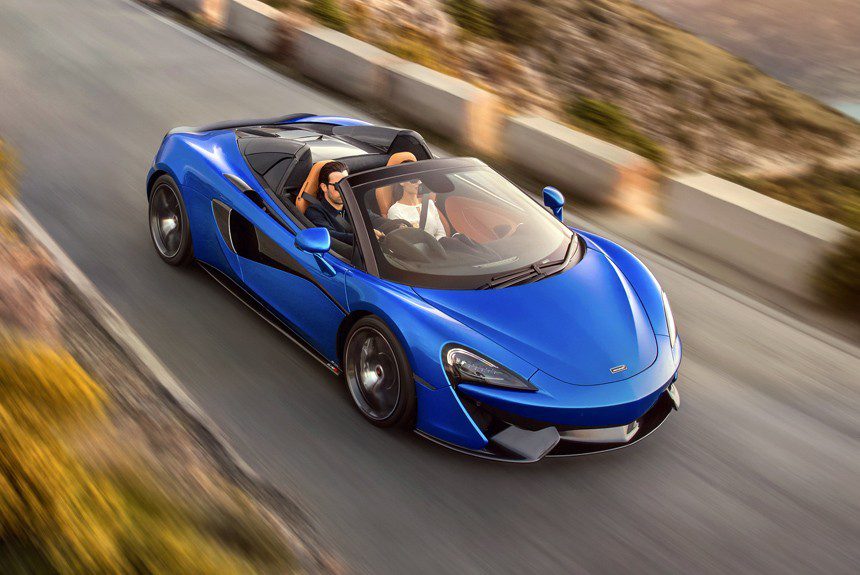
The roof is down!; we drove a McLaren 570S Spider
McLarn's range of wind turbines has increased from three (570C, 12S Spider and 650LT Spider) to four with the introduction of the 675S Spider and sales will be affected. McLaren is a brand whose customers love the wind in their hair - in the 650, nine out of 10 customers opt for a convertible roof. Add to that the fact that the 570S is also McLarn's cheapest model (which doesn't mean it's cheap, since in Germany it starts at a good 209k euros), it's clear they're looking to sell heavily. . The 570S belongs to a series of models that McLarn brings together under the Sport Series brand, which means McLarn's cheapest and least powerful model - the offer starts with the 540C, which costs about 160, and ends with the 570S Spider. Above is the Super Series group (which includes the 720S), and the story ends with the Ultimate Series label, which currently has no offer as the P1 and P1 GTR are finally sold out and no longer in production. The new model is promised before the end of the decade, but it is clear that it will be closer to F1 than a road car and will compete against the announced GTR-badged road race car.
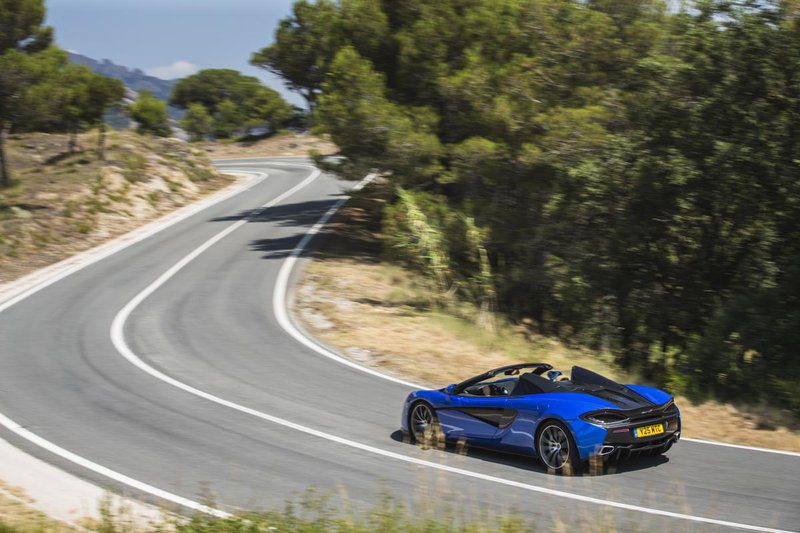
Third model 570
Thus, the 570S Spider is the third model with the designation 570 (after the 570S coupe and the more comfortably oriented 570GT), and McLarn's engineers have achieved the highest technical achievements. The Spider is only 46 kilograms heavier than the coupe (its weight is 1.359 kilograms), which is a kind of record. The differences between the competitors are much larger: the convertible is 911 kg heavier with the Porsche 166 Turbo, 183 kg heavier with the Lamborghini Huracan and 8 kg heavier with the Audi R10 V228.
Just 46 extra pounds, given the fact that the roof (made from just two pieces) opens in just 15 seconds at speeds up to 40 kilometers per hour, means a small price to pay for the pleasure of wind in your hair. The sound of the 3,8-liter turbocharged V-570 is, of course, much closer to the ears in the Spider, so there is not too much wind here, but there is an electrically adjustable glass opening between the air arches behind the driver's and passenger's head. At the same time, the roof is sufficiently well insulated that the 650S Spider is a fifth quieter than the XNUMXS Spider when the roof is closed.

That said, the rear fenders are placed 1,2 centimeters higher (so it is in a stream of clean air and therefore efficient enough even with the roof open), and both safety arches behind the seats are made of steel. Of course, in normal use they are almost hidden, but in case of danger (as is usually the case with such vehicles) they pyrotechnically move to the upper position and protect the "living content" in the event of a rollover.
How much effort McLarn put into aerodynamics is already shown by the fact that the 570S Spider has the same drag coefficient as the coupe when the roof is up. It is worth noting that in the last position it has a pleasant 202 liters of luggage compartment (the folded roof takes up 52 of them).

Since the 570S Spider falls under the Super Series designation as a coupe sibling, it lacks active aerodynamic elements. However, the engineers also managed to make the car stable at high speeds with fixed fenders, flat underbody, spoilers and diffusers, while muffling enough wind noise around the body and improving brake cooling and drive technology.
The door opens up
The door, as befits the Woking brand, opens up, which greatly simplifies access to the cabin. I still remember how their first models had to almost acrobatic climb behind the wheel, but there are no such problems, even for long-legged ones. The first impression of the interior: simple, but with high quality materials. The workmanship is of course excellent, ergonomics too. Leather seats, instrument panel and upholstery - Alcantara. Steering wheel? No buttons (except for the button for the pipe), which is the first rarity in the modern automotive world. Controls are concentrated on the center console, where there is a seven-inch LCD touchscreen (which is of course oriented vertically), and below it are all the necessary buttons - from the most basic ones for air conditioning to buttons for controlling the transmission and selecting driving mode (Normal / Sport / Track with the ability to turn off the stabilization electronics) and transmission or gearbox (by the same methods and the ability to turn on a fully manual shift using the levers on the steering wheel). Of course, there are also buttons for activating fully automatic operation and switching on the start mode. Oh yes, there is also an on/off button for the start/stop system. You know, to save fuel...
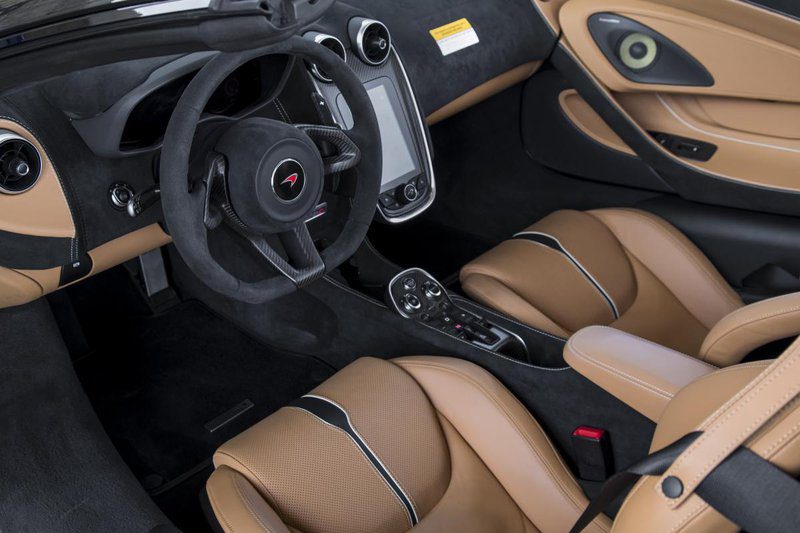
Also to be commended is the excellent forward handling behind the A-pillars, the panoramic windshield and of course the fully digital gauges that change depending on the selected driving profile. When buying, you can choose between wider and narrower seats, which also provide good lateral support in the wider version. A third option is the carbon structure sports seats, which are around 15kg lighter than regular seats, but of course also offer less adjustment options.
Of course, not without a couple of hesitations: some of the buttons inside (for example, for sliding windows and air conditioning) really don't fit such an expensive car, and the rear-view camera has ridiculously poor resolution and image.
Time can run fast
Kilometers on the 570S Spider went quickly from the center of Barcelona to the mountain roads near Andorra. Already in the city, it impresses with a steering wheel, which is just right weighted and does not get tired of transmitting unnecessary vibrations from under the wheels, and on open winding roads - with surgical precision. The electro-hydraulic power steering is great, and 2,5 rpm from end to end is just the right amount to keep the steering fast but not too jittery at highway speeds.
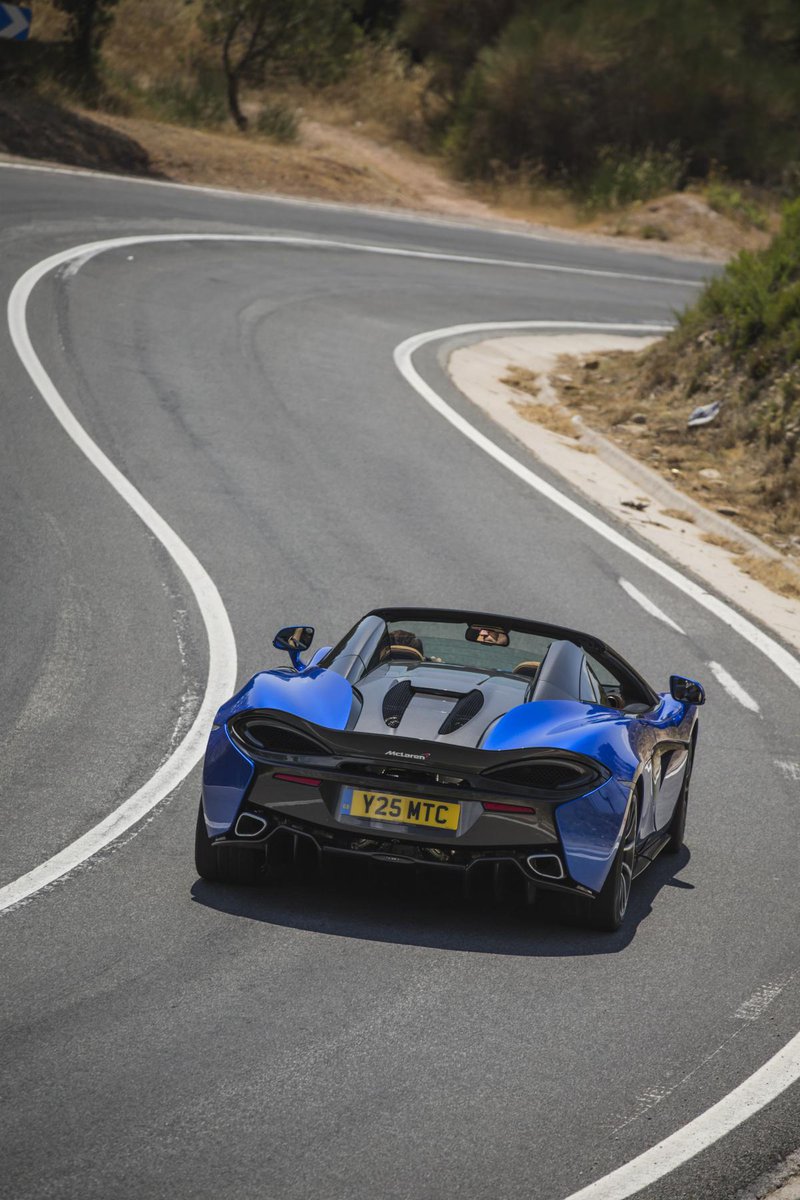
The same hydraulic pump that regulates the pressure in the steering system also ensures that the 60S Spider's bow can be raised 570mm at low speeds (up to 40 kilometers per hour), which is handy in garages. or speed obstacles.
At least as impressive as the steering are the brakes: the discs are ceramic, and of course they are unaware of overheating fatigue. The stabilization system works silently, and its sensitivity is adjustable regardless of the chassis settings. The latter, of course, is not as active as the more expensive McLarns, and the dampers are electronically controlled varieties.
The possibilities, although almost an entry-level model, are, of course, astronomical. The 3,8-liter V8 engine makes a very healthy 570 “horses” and is even more impressive with 600 Nm of torque. The response of the engine is excellent, and just enough for 3,2 seconds of acceleration to 100 kilometers per hour (and from 9,6 to 200) and 328 kilometers per hour of final speed - almost the same as in the coupe. And let's not forget that with the roof down, you can't reach 328 mph, because then the top speed is limited to 315. Terrible, isn't it?
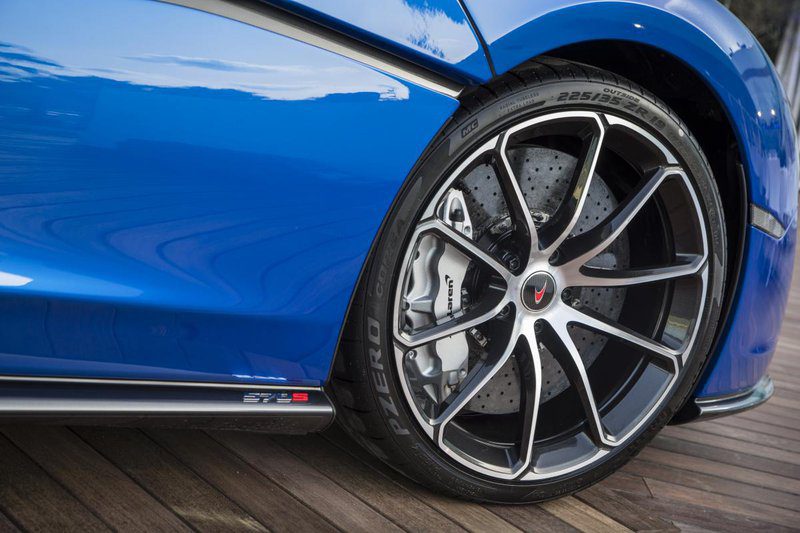
Well, the numbers are certainly not record-breaking as the 911 Turbo S Cabrio is slightly faster, but the 570S Spider is faster than the Mercedes AMG GT C Roadster and as fast as the Audi R18 V10 Plus Spyder.
The seven-speed dual-clutch transmission also deserves an excellent rating, especially for the extremely (despite the absence of a roof) sturdy body, in which, no matter where and how you drive, vibrations cannot be detected due to the fact that the roof structure is not conducive to its strength. in the compartment. And if the driver is using the normal chassis and drive settings, the 570S Spider will be quite comfortable even on rough roads. At the same time, it is impressive in the fact that on such roads (and not just on the race track) it can be pushed to the limit of grip quite easily, as it offers a lot of feedback and does not make the driver nervous about too fast or unexpected responses. Or else: do you need more McLaren?

Magic component: carbon
At McLarn they have over 30 years experience with carbon monocoques - John Watson raced their carbon monocoque Formula 1 car and also won in 1981. Not surprisingly, they use this material in road cars as well. All McLarns have a carbon structure (the current generation of monocoques is called Monocell III), so they are much lighter than their competitors. Light weight is the main reason why the new McLaren has 419 “horsepower” per ton of weight and at the same time is 25 percent more rigid than the rigidity of the same aluminum body. Well, this metal is also present in the 570S Spider, but not on the load-bearing parts: from it the front cover, doors, rear fenders and the rear bodywork in between. It's worth noting that at McLarn, the aluminum is "inflated" into shape, as this makes production more precise and reduces weight. Of course, the 570S Spider is built at the Woking plant, it takes 11 days (or 188 working hours) to produce, and the production line consists of 72 workstations and 370 technicians.
Text: Joaquim Oliveira · photo: McLaren
